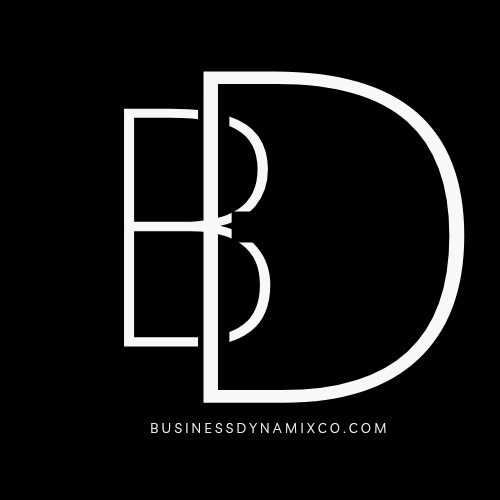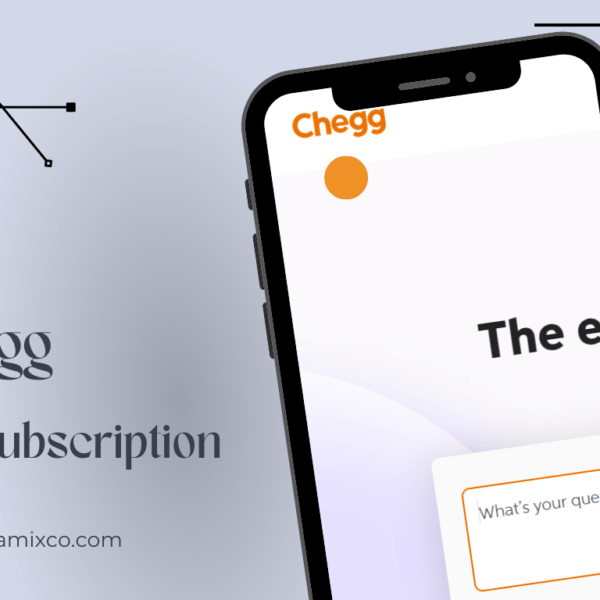Want to learn how to start an ecommerce business with no Money ? This is a complete blueprint for launching a new ecommerce store.
E-commerce businesses are the fastest growing sector of the small business community, and with good reason. With billions of people shopping online, and social media making it easier to reach your ideal customer than ever before, many people are excited to make a start.
The main two Rockets that help your Ecommerce business.
- Dropshipping
- Selling Digital Products
Dropshipping :

Think of dropshipping as selling cool stuff online without having to store it yourself. You find a supplier who has the goods, then when someone buys from you, the supplier whizzes it straight to your customer.
- Finding Your Supplier Squad:
This is where your detective skills come in handy. Look for reputable dropshipping suppliers on online marketplaces like Spocket or Doba and make sure they offer a variety of products that align with your niche – think cat ear headphones for all the feline fanatics out there! – and have competitive prices. Bonus points if they integrate with your chosen e-commerce platform to streamline the order fulfillment process.
Selecting Products: To make the most your products, you gotta consider a few things.

First, you want a healthy profit margin. That’s just fancy talk for the difference between what you sell it for and what you pay the supplier. So, choose products where that gap is nice and big!
Next, keep your ear to the ground for what’s trending. What are people crazy about these days? But also, think outside the box. Are there any problems people have that current products don’t quite solve?
That’s your chance to offer something unique and win customers over.
Remember that shipping ain’t free. Lighter and smaller products generally cost less to ship, which means more profit in your pocket. So keep that in mind when you’re picking your winners!
- Setting Up Your Online Store: Free e-commerce platforms like Shopify or Wix offer limited features but allow you to get started without upfront costs. These platforms often have paid plans with additional features as your business grows. You can design your online store using free templates and customize it to reflect your brand identity.
How to set up an online store ?
As I Mentioned earlier platforms like shopify and others offers free plan to build up your store. And next you have to,
Design Your Online Store:
Even with free templates, you can customize your store’s look and feel to reflect your brand. Focus on user experience with clear navigation and high-quality product images and descriptions.
Set Up Payment Processing:
Integrate a secure payment gateway like Stripe or PayPal to accept customer payments. Consider transaction fees associated with each option.
Launch and Market Your Store:
Once you’re happy with your store’s setup, it’s time to launch! Promote your store on social media, explore search engine optimization (SEO) to improve search ranking, and consider email marketing to reach potential customers.
Marketing Your Store:

When it comes to promoting a new product or service for your ecommerce store, it can seem like there are endless options. It can be difficult to figure out where to get started and which methods of promotion will give you the best results. The truth is there are many low cost ways to promote your business and what works may depend on your industry, offerings, and audience.
Here are 12 ways to promote you Ecommerce store
- Search Engine Optimization (SEO)
- Content Marketing
- Social Media Marketing
- Pay-Per-Click (PPC) Advertising
- Social Media Advertising
- Customer Reviews and Testimonials
- Influencer Marketing
- Email Marketing
- Offer Discounts and Promotions
- Loyalty Programs
- Exceptional Customer Service
- Public Relations (PR)
Selling Digital Products:
Digital products can be created once and sold repeatedly.

- Finding Your Niche: Consider your interests, skills, and knowledge to identify a topic for your digital product.
- Creating Your Product: If you’re creating an e-book, use free writing tools like Google Docs and online design tools like Canva to format and design it professionally. For online courses, platforms like Udemy or Skillshare offer tools to create video lectures, quizzes, and assignments.
- Selling Your Product: There are several platforms dedicated to selling digital products like Etsy or Gumroad. They handle secure payments and customer downloads.
Now , Let me explain it deeply
12 best digital products to sell online
- Online Courses
- Ebooks
- Licensed digital content
- Graphic design
- Templates
- Music and video
- Software and games
1. Online Courses :

Online courses are the best way to present in-depth content in a monetized digital format. You can create a presentation, record a video walk-through, or develop a course featuring the voices of subject-matter experts.
Once created, your course can be taken by thousands (or hundreds of thousands) of students. You only need to make updates when your content becomes outdated or loses relevancy.
When ideating your course, begin by visualizing learner outcomes: what do you want your learner to know or be able to do when they have completed your content?
Online courses can include quizzes, knowledge checks, and other interactive activities to break-up passive learning content and boost engagement.
2.Licensed digital Content :

Unlike a physical book, an ebook can’t be held or touched. It exists as a digital file. Ebooks are typically delivered electronically, downloaded by the customer after purchase. This could be through a website, email, or specific ebook platform. Once created, the ebook can be sold countless times without needing to reproduce or ship anything. This makes them ideal for online businesses.
3.Licensed digital Content :
From stock photos to video footage, music, and sound effects, there’s a global ecosystem of licensable digital assets uploaded by creatives for other creatives to use in their work.
Licensing your content for use by individuals and businesses is a way to generate passive income from your creations. Invest your labor in creating some top-quality video transitions or background music, then receive revenue from their use, for as long as they remain popular.
Example,
Pond5:Pond5 offers a variety of stock footage plans, including a student plan with unlimited downloads for a year at a discounted rate. They also have a large library of high-quality footage, from drone shots to motion graphics.

Pond5 website
4. Why Graphic Design Makes Great Digital Products:
Just take Adobe illustrator as an example..
Just like ebooks, graphic design exists as a digital file, not a physical object. This makes them downloadable and easily delivered online. Once created, the digital design file can be sold countless times without any additional production costs. You can offer the same product to multiple customers, creating a scalable income stream.
Examples of Graphic Design as Digital Products:
- Vector Illustrations: Sell packs of downloadable vector illustrations that can be used for websites, presentations, or marketing materials.
- Icon Sets: Create icon packs in various styles, useful for web design, app design, and presentations.
- Social Media Templates: Design pre-made templates for social media posts (Instagram, Facebook, etc.) that businesses or individuals can easily customize.
- Printable Art: Offer downloadable high-resolution artwork for prints, posters, or greeting cards.
- Design Mockups: Create mockups of products like t-shirts, mugs, or phone cases that can be customized with a client’s design.
- UI/UX Kits: For web or app designers, sell UI/UX element kits that contain buttons, menus, and other pre-designed elements for building interfaces.
- Fonts: If you’re a skilled typographer, you can design and sell your own custom fonts for online use.
Benefits of Selling Graphic Design Products Online:
- Passive Income: Once you create the digital product, it can continue to generate income without further effort from you.
- Low Overhead: There are minimal costs associated with selling digital products compared to physical products (no printing, packaging, or shipping).
- Global Reach: You can sell your designs to customers anywhere in the world with an internet connection.
5. Templates :
Just take Canva as an Example..
A template can save someone the effort of designing a website from scratch. It can also help them get their wedding invitations sent out on time, create personalized business cards, plan their marketing strategy, crunch some numbers on Excel, or polish their resume in a pinch.
templates you can sell include:
- Business planning templates
- Marketing strategy templates
- Excel templates
- Google Data Studio Analytics templates
- Business contracts
- Canva Templates
- WordPress themes
- DIY home project blueprints
- PowerPoint presentations
6. Music and Video :

Examples of audio products include:
- Beats and instrument samples
- Plugins for music software
- Stock music
- Sound effects
Podcasters, YouTubers, bedroom pop stars, film producers, marketing teams—they all use audio in one form or another, and they’re all in the market for that special element to make their work stand out.
If people enjoy a particular podcast or album, for example, they might be interested in items carrying designs that reference the art.
You can use print on demand companies to create branded merch and sell it on a shopify store, with no need to pay for manufacturing until you make a sale.
Often, this form of digital product selling works best with niche target markets. For example, Materia store sells digital sheet music for popular video game soundtracks.
7. Software and Games :
Software and digital games both have sizable markets. Although creating either of these digital items requires coding expertise, those with a background in development may find them to be quite profitable. If you want to enter the software or game industry but lack the technical know-how to create a product yourself, think about collaborating with someone who does.
Any solution or software that runs on code is considered software. This covers desktop software, web apps, mobile apps, and a plethora of other choices. When deciding what kind of software you would like to offer, consider the effort differences between, say, a simple mobile game and intricate accounting software. Maybe a quicker way to get money is to sell smaller, more specialized software.
Due to platforms like Steam, which enable creators to sell directly to players without the intervention of major studios, the independent gaming sector has also grown rapidly in recent years.

Popular indie games such as Among Us and Hollow Knight have become massively popular. Although making a digital game requires a significant time investment, there might be significant rewards.
Without the need to hold inventory or the overhead associated with selling physical products, all types of digital products can be profitable nowadays.
There are countless ways you can create the best digital content to sell and resell and incorporate them into your business. With a little ingenuity and upfront investment of time, you can serve up irresistible value that can more than pay for itself over time.
Conclusion
Don’t Give Up
You won’t have to do everything yourself forever, in fact, one day your main job will be handing off as much as you can. But at the beginning, learn as much as you can about running a product business.
Consider a low cost option like joining a membership to help you get access to knowledge, support and a community of other business owners, which may well save you money in the long run as it will help you avoid costly mistakes as you grow.
By keeping your costs tightly controlled, you’ll be able to put your dream into motion with less money than you think. In fact, learning how to do more with less money is an important skill that will help you build your dream business profitably.
Check out my website or some of my other work here.
Ecommerce Website FAQs :
1.What can I sell without buying inventory?
Digital Products: E-books, online courses, templates, printables, music, photography – anything that can be delivered electronically. Dropshipping: Partner with suppliers who hold and ship products after you make a sale. You focus on marketing while they handle fulfillment.
- How can I create an online store for free?
Online Marketplaces: Platforms like Etsy or eBay allow you to list products and sell through their established audience. Free Website Builders: Services like Wix or Squarespace offer limited free plans to create a basic online store.
- How will I reach customers without a budget?
Social Media Marketing: Leverage free platforms like Instagram, Facebook, and TikTok to build a brand and showcase your products. Content Marketing: Create engaging blog posts, articles, or videos related to your niche to attract organic traffic. Email Marketing: Build an email list and send targeted campaigns to convert website visitors into customers.
- What are the challenges of starting with no money?
Limited Product Selection: Dropshipping options may restrict your offerings, and digital products require creation upfront. Marketing Efforts: Building brand awareness takes time and consistent effort without paid advertising. Profit Margins: Dropshipping products often have lower margins, requiring more sales to reach profitability.
- Are there any resources to help me get started?
Shopify Blog: Offers articles and guides on starting an e-commerce business, including low-budget options. Printify Blog: Provides insights on dropshipping and print-on-demand businesses. YouTube Tutorials: Search for “e-commerce business with no money” to find video guides and tips.
Don’t Forget to visit my Website !
And don’t forget to visit my website….

Founder of Businessdynamixco.com and top3s.businessdynamixco.com.
Website Builder, Growth Hacker, always get Excited in writing Articles with my little Experience !






